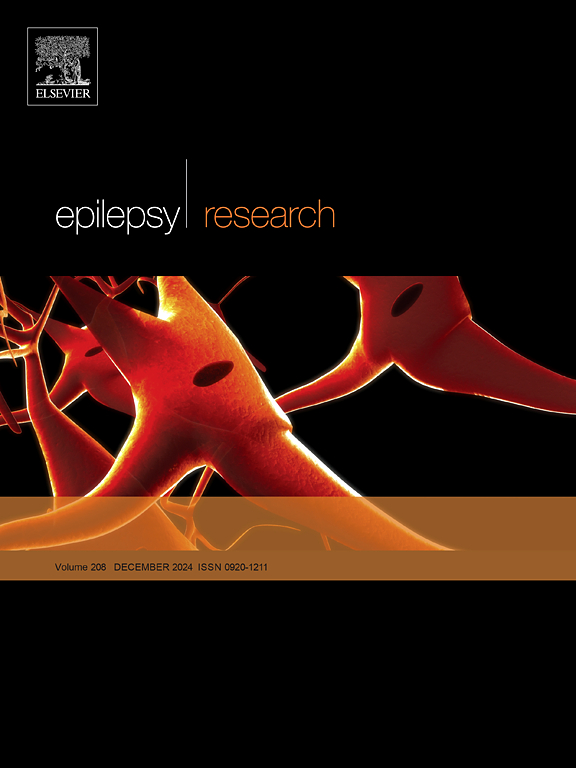A retrospective analysis of pediatric patients on a ketogenic diet: A comparison of inpatient versus outpatient diet initiations
IF 2
4区 医学
Q3 CLINICAL NEUROLOGY
引用次数: 0
Abstract
Introduction
Ketogenic diet therapies are effective therapies for drug-resistant epilepsy. Conventional initiation of the ketogenic diet occurs via inpatient (IP) admission to a hospital. The COVID19 pandemic forced changes to practices allowing for comparison between inpatient (IP) and outpatient (OP) initiations. Our aim was to evaluate differences between IP and OP initiations including laboratory results, seizure reduction and communications with patients.
Methods
This is a retrospective chart review of patients initiated on a ketogenic diet (modified Atkins [MAD] or classic ketogenic [CKD]) between 2007 and 2022. We compared variables such as demographic data, communications, lab values, seizure counts, IP or OP initiation, presence of a gastrostomy tube (g-tube), and diet type.
Results
Of the 157 total subjects, 139 subjects initiated CKD and 18 subjects initiated MAD. 39 initiated OP and 118 initiated IP. The odds of a 50 % reduction in seizures at 65 days post initiation increased four times for IP initiation after adjusting for the impact of serum beta hydroxybutyrate (BHB). This difference was no longer present at 196 days post initiation. Number of communications between diet initiation and the first visit post initiation were similar for IP and OP. G-tube presence or absence did not impact outcomes.
Conclusion
IP initiation resulted in better seizure control at the first visit post initiation. CKD was the only variable associated with increased communications. Since seizure improvement rates were similar at 196 days, a gradual approach with lower CKD ratios may be considered. G-tube presence had no impact on outcomes and should be weighted less when considering admission.
对生酮饮食的儿科患者的回顾性分析:住院患者与门诊患者饮食起始的比较
生酮饮食疗法是治疗耐药癫痫的有效疗法。传统的生酮饮食是通过住院病人(IP)入院开始的。covid - 19大流行迫使改变做法,以便比较住院(IP)和门诊(OP)的启动情况。我们的目的是评估IP和OP启动之间的差异,包括实验室结果、癫痫发作减少和与患者的沟通。方法回顾性分析2007年至2022年间开始使用生酮饮食(改良阿特金斯饮食[MAD]或经典生酮饮食[CKD])的患者。我们比较了诸如人口统计数据、通信、实验室值、癫痫发作次数、IP或OP起始、是否有胃造口管(g管)和饮食类型等变量。结果157例受试者中,139例受试者开始CKD, 18例受试者开始MAD。39人发起OP, 118人发起IP。在调整血清β -羟基丁酸酯(BHB)的影响后,IP启动后65天癫痫发作减少50% %的几率增加了4倍。这种差异在起始后196天不再存在。饮食开始和开始后第一次就诊之间的沟通次数在IP和op中相似。g管的存在或不存在对结果没有影响。结论ip启动后第一次就诊时癫痫发作控制较好。CKD是唯一与交流增加相关的变量。由于发作改善率在196天相似,可以考虑采用循序渐进的方法降低CKD比例。g管的存在对预后没有影响,在考虑入院时应减少其权重。
本文章由计算机程序翻译,如有差异,请以英文原文为准。
求助全文
约1分钟内获得全文
求助全文
来源期刊

Epilepsy Research
医学-临床神经学
CiteScore
0.10
自引率
4.50%
发文量
143
审稿时长
62 days
期刊介绍:
Epilepsy Research provides for publication of high quality articles in both basic and clinical epilepsy research, with a special emphasis on translational research that ultimately relates to epilepsy as a human condition. The journal is intended to provide a forum for reporting the best and most rigorous epilepsy research from all disciplines ranging from biophysics and molecular biology to epidemiological and psychosocial research. As such the journal will publish original papers relevant to epilepsy from any scientific discipline and also studies of a multidisciplinary nature. Clinical and experimental research papers adopting fresh conceptual approaches to the study of epilepsy and its treatment are encouraged. The overriding criteria for publication are novelty, significant clinical or experimental relevance, and interest to a multidisciplinary audience in the broad arena of epilepsy. Review articles focused on any topic of epilepsy research will also be considered, but only if they present an exceptionally clear synthesis of current knowledge and future directions of a research area, based on a critical assessment of the available data or on hypotheses that are likely to stimulate more critical thinking and further advances in an area of epilepsy research.
 求助内容:
求助内容: 应助结果提醒方式:
应助结果提醒方式:


